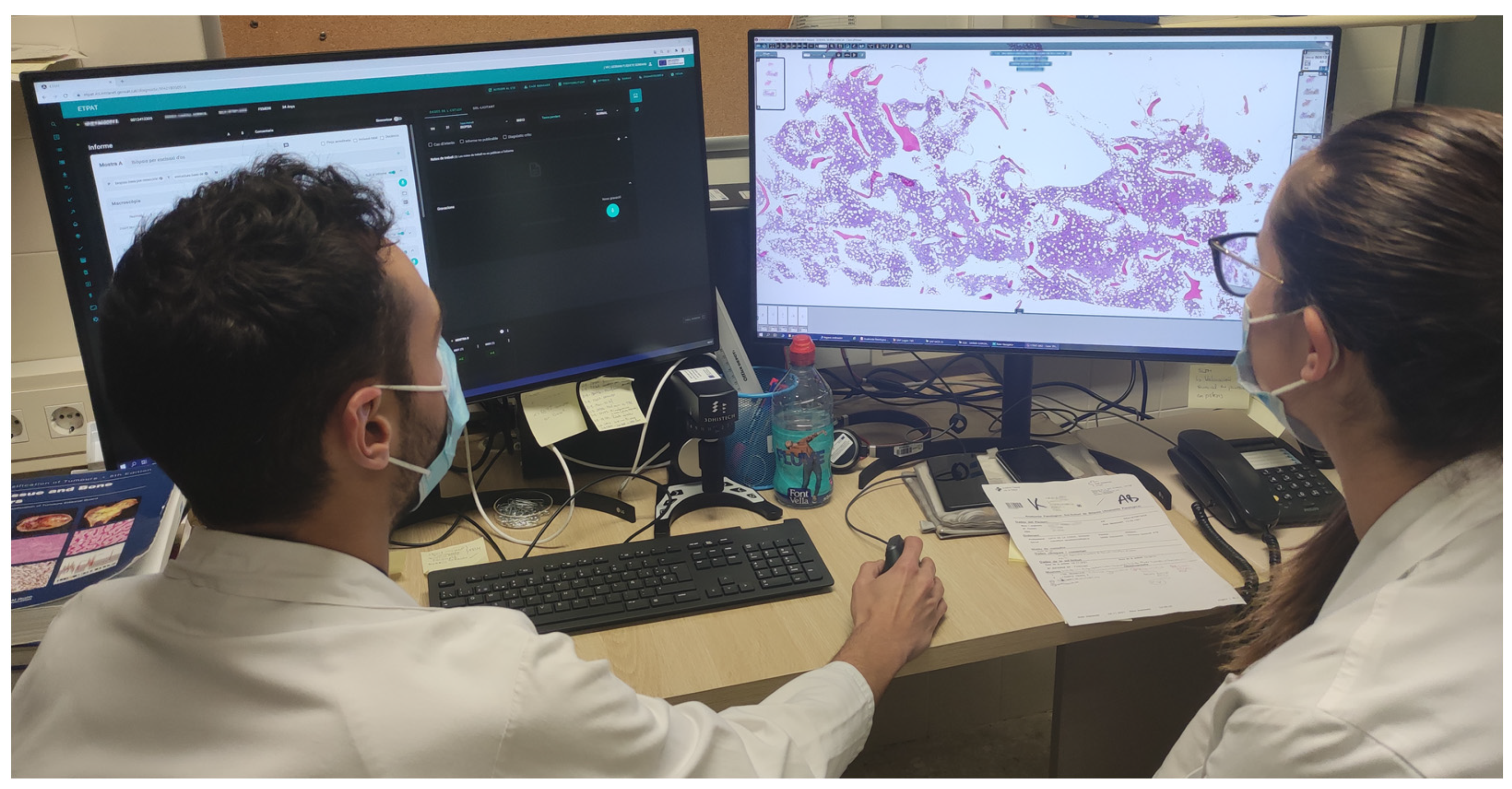Difference between revisions of "Template:Article of the week"
Shawndouglas (talk | contribs) (Updated article of the week text) |
Shawndouglas (talk | contribs) (Updated article of the week text) |
||
| Line 1: | Line 1: | ||
<div style="float: left; margin: 0.5em 0.9em 0.4em 0em;">[[File: | <div style="float: left; margin: 0.5em 0.9em 0.4em 0em;">[[File:Fig4 Temprana-Salvado Diagnostics22 12-4.png|240px]]</div> | ||
'''"[[Journal: | '''"[[Journal:DigiPatICS: Digital pathology transformation of the Catalan Health Institute network of eight hospitals - Planning, implementation, and preliminary results|DigiPatICS: Digital pathology transformation of the Catalan Health Institute network of eight hospitals - Planning, implementation, and preliminary results]]"''' | ||
[[ | Complete [[digital pathology]] transformation for primary [[Histopathology|histopathological]] diagnosis is a challenging yet rewarding endeavor. Its advantages are clear with more efficient [[workflow]]s, but there are many technical and functional difficulties to be faced. The Catalan Health Institute (Institut Català de la Salut or ICS) has started its DigiPatICS project, aiming to deploy digital pathology in an integrative, holistic, and comprehensive way within a network of eight [[hospital]]s, over 168 [[Pathology|pathologists]], and over one million slides each year. We describe the bidding process and the careful planning that was required, followed by swift implementation in stages. The purpose of the DigiPatICS project is to increase patient safety and quality of care, improving diagnosis and the efficiency of processes in the pathological anatomy departments of the ICS through process improvement, digital pathology, and [[artificial intelligence]] (AI) tools ... ('''[[Journal:DigiPatICS: Digital pathology transformation of the Catalan Health Institute network of eight hospitals - Planning, implementation, and preliminary results|Full article...]]''')<br /> | ||
<br /> | <br /> | ||
''Recently featured'': | ''Recently featured'': | ||
{{flowlist | | {{flowlist | | ||
* [[Journal:Structure-based knowledge acquisition from electronic lab notebooks for research data provenance documentation|Structure-based knowledge acquisition from electronic lab notebooks for research data provenance documentation]] | |||
* [[Journal:Food informatics: Review of the current state-of-the-art, revised definition, and classification into the research landscape|Food informatics: Review of the current state-of-the-art, revised definition, and classification into the research landscape]] | * [[Journal:Food informatics: Review of the current state-of-the-art, revised definition, and classification into the research landscape|Food informatics: Review of the current state-of-the-art, revised definition, and classification into the research landscape]] | ||
* [[Journal:Creating learning health systems and the emerging role of biomedical informatics|Creating learning health systems and the emerging role of biomedical informatics]] | * [[Journal:Creating learning health systems and the emerging role of biomedical informatics|Creating learning health systems and the emerging role of biomedical informatics]] | ||
}} | }} | ||
Revision as of 17:07, 7 November 2022
Complete digital pathology transformation for primary histopathological diagnosis is a challenging yet rewarding endeavor. Its advantages are clear with more efficient workflows, but there are many technical and functional difficulties to be faced. The Catalan Health Institute (Institut Català de la Salut or ICS) has started its DigiPatICS project, aiming to deploy digital pathology in an integrative, holistic, and comprehensive way within a network of eight hospitals, over 168 pathologists, and over one million slides each year. We describe the bidding process and the careful planning that was required, followed by swift implementation in stages. The purpose of the DigiPatICS project is to increase patient safety and quality of care, improving diagnosis and the efficiency of processes in the pathological anatomy departments of the ICS through process improvement, digital pathology, and artificial intelligence (AI) tools ... (Full article...)
Recently featured:
- Structure-based knowledge acquisition from electronic lab notebooks for research data provenance documentation
- Food informatics: Review of the current state-of-the-art, revised definition, and classification into the research landscape
- Creating learning health systems and the emerging role of biomedical informatics










